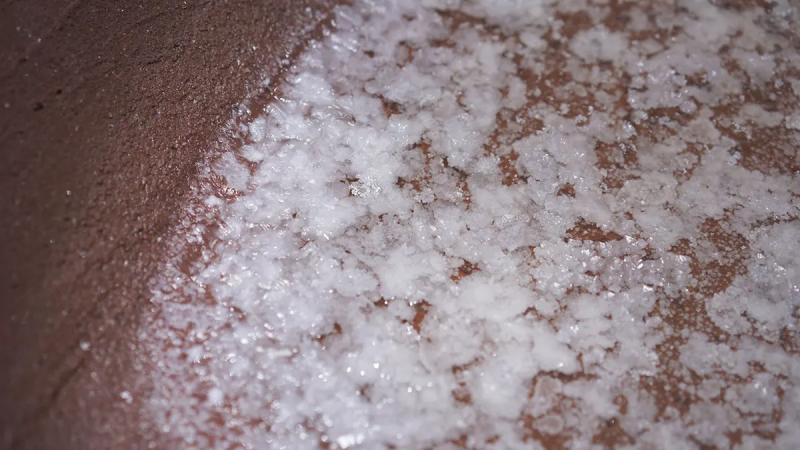Hawaii families preserve sacred salt making tradition at state's last remaining salt patches
- The tradition of making salt from sea water on the island of Kauai is deeply rooted in Native Hawaiian families.
- The laborious and patient nature of salt making reflects the cultural values held by the salt makers.
- Despite a significant reduction in the annual harvest over the years, salt makers continue the tradition, completing multiple harvests.
The process of making salt from sea water is a lengthy and laborious one that requires patience, perseverance and stoicism. Work that salt makers do for hours or even days could be wiped out by passing rain showers, which are all too common on the island of Kauai. The multi-step process used by Native Hawaiian families is several centuries old.
How is salt made at the Kauai salt patch?
Step 1: Deep wells or puna are cleaned of dirt and debris so the sea water that enters them through underground channels is clean and conducive to salt making.
Step 2: The salt beds or loi are smoothed out using river rock to seal the rich black clay and mud mixture.
HAWAII GOV. GREEN PROPOSES $425M RECOVERY BUDGET FOR MAUI AFTER DEVASTATING WILDFIRES
Step 3: Sea water from the wells is transferred to rectangular holding tanks known as waiku. The brine in the waiku begins to evaporate and salt crystals begin to form on the surface.
Step 4: The salt maker gently pours this brine from the holding tanks into the drying beds.
Step 5: Over several weeks, the water evaporates and slushy layers of white salt begin to form. This salt is harvested by carefully and slowly raking the large flakes from the bed and transferring them to baskets.
Step 6: The harvested salt is then dipped back into the sea water to rinse off debris.
Step 7: Once rinsed, the salt is left to dry in the sun for at least four weeks.

Salt begins to form in one of the dozens of salt beds in the Hanapepe salt patch on Kauai Island on July 12, 2023, in Hanapepe, Hawaii. This Native Hawaiian salt has been hand made for generations.
During a good salt making year, a family may complete three harvests repeating the same process.
Can the salt be sold?
No. This sacred salt can be traded or given away, but must never be sold. The amounts harvested annually have significantly shrunk. Five decades ago, families gave away 5-gallon buckets full of salt. Today, it is handed out in sandwich bags.
How is the salt used?
Hawaiians use it in cooking, healing, rituals and as protection. Typically, the whitest in color is used as table salt, the pink salt is for cooking and the red is used in rituals and blessings, but that could vary depending on the circumstance and the cultural or spiritual context.
IN HAWAII, OVERGROWN GULLY AND STUBBORN EMBERS MAY HAVE CONTRIBUTED TO MAUI’S FAST-SPREADING WILDFIRE
Malia Nobrega-Olivera, who is working to preserve this sacred tradition, believes Hanapepe salt has the power to ward off bad energy.
After the Maui fires in August that claimed 100 lives, spiritual practitioners from the island specifically requested white Hanapepe salt from Nobrega-Olivera to bless and "calm" the traumatized island, particularly areas that housed makeshift morgues.
The salt makers continue to send their salt to survivors who are rebuilding their lives. They also plan to visit Maui to share their knowledge of salt making with the locals.
Disclaimer: The copyright of this article belongs to the original author. Reposting this article is solely for the purpose of information dissemination and does not constitute any investment advice. If there is any infringement, please contact us immediately. We will make corrections or deletions as necessary. Thank you.







